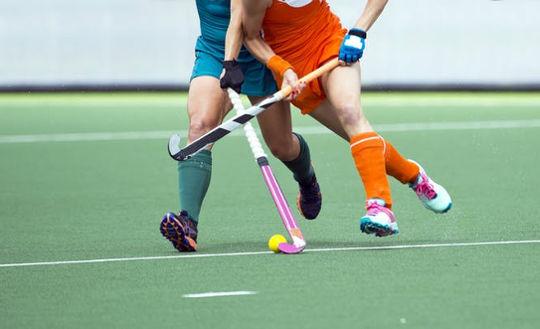
Photo via shutterstock.com
Menstruation is often called the “last great taboo” in women’s sport. But periods are the media’s taboo, not sportswomen’s. Our new research showed that elite athletes are not afraid to talk about their menstrual cycle and how it affects them. We also found that half of the 430 athletes we interviewed are using some kind of hormonal contraceptive, which affected their menstrual cycle.
The menstrual cycle is a repeating pattern of hormones, designed to allow pregnancy to occur. Each phase produces different concentrations of the hormones oestrogen and progesterone. On the other hand, hormonal contraceptives aim to prevent pregnancy by removing the menstrual cycle and creating a new hormonal environment, with low levels of oestrogen and progesterone almost all of the time.
These hormonal differences, between women with and without a menstrual cycle, mean that not all female athletes are the same. As oestrogen and progesterone have the potential to affect many aspects of health and sports performance, it’s important to know the hormonal profile of each athlete, so that training and performance can be optimised.
Up until now, it was unknown how many elite sportswomen in the UK used hormonal contraceptives, such as the oral contraceptive pill, the contraceptive injection, a patch or implant. My colleagues and I surveyed 430 elite athletes, from 24 different sports including hockey, football and rowing, to determine how many used a hormonal contraceptive or not.
As contraceptives can have other roles outside of preventing pregnancy, we asked them about any other effects they experienced as a result of taking them – such as easing painful periods, heaving bleeding and acne. We also asked the athletes who didn’t use a hormonal contraceptive to tell us about their experiences with the menstrual cycle. This meant that we could compare those athletes who had a menstrual cycle – with variable hormone concentrations – versus those who used hormonal contraceptives and had a more stable hormonal profile.
Managing periods with contraceptives
Out of 430 sportswomen, 213 (49.5%) used some type of contraceptive and 217 (50.5%) did not. The oral contraceptive pill was the most popular type of hormonal contraceptive – used by 78.4% of contraceptive users. Contraceptive users reported 19 negative side effects, with weight gain, irregular periods and poor skin being the most common.
In contrast to the negative side effects reported, 12.7% of contraceptive users told us they liked the regularity of the pill and knowing when they would experience their withdrawal bleed – not the same as a period – which happens during the seven pill-free days of an oral contraceptive pill cycle. In addition, 12.2% of the athletes using a hormonal contraceptive said they liked having a reduced number of bleeds per year, which can be achieved by skipping the pill-free days. Knowing when the withdrawal bleed would occur allows athletes to avoid bleeding during an important competition, such as the Olympics.
Athletes not using any type of hormonal contraceptive had menstrual cycles of different lengths, usually between 21 and 35 days. Just over three-quarters of these athletes reported negative side effects that usually occurred during the first day or two of the cycle, when they were having their period. The most common side effects were cramps, back pain, headaches and bloating.
A healthy hormonal profile
Although some of the athletes in our study reported a small number of perceived advantages to using a hormonal contraceptive, outside of the medical benefits, my colleagues and I aren’t suggesting that all athletes switch to contraceptive use. We don’t believe that convenient benefits, such as reducing the number of withdrawal bleeds, outweigh the likely undesirable health consequences of chronically low hormone levels caused by hormonal contraceptive use.
Having a menstrual cycle – and not using a hormonal contraceptive – which includes phases with high oestrogen concentrations is associated with good bone health and better fertility outcomes.
The menstrual cycle is part of a much bigger health issue for female athletes. A concept called the “female athlete triad” describes the link between menstrual function, energy availability and bone health. If an athlete does not have a healthy menstrual cycle – which can be caused by low energy availability – then this can cause problems for her bone health. Another concept, known as “relative energy deficiency in sport” expands upon this by adding other aspects of health and performance. This research suggests that bone health may not be the only aspect of health or performance affected by poor menstrual function.
Taken together, these two concepts teach us that having a menstrual cycle is better than not having one. While some athletes told us that they experienced a small number of negative side effects during their period, the long-term benefits of having a period clearly beat the possible short-term issues. Athletes need to be supported with these issues, which can be achieved by athletes talking openly about their periods and menstrual cycles with their coaches and medical professionals. This way, we can ensure that their hormonal profile is the best it can be for their health and sporting performance.
About The Author
Kirsty Elliott-Sale, Senior Lecturer, School of Science & Technology , Nottingham Trent University
This article was originally published on The Conversation. Read the original article.
Related Books
at InnerSelf Market and Amazon























